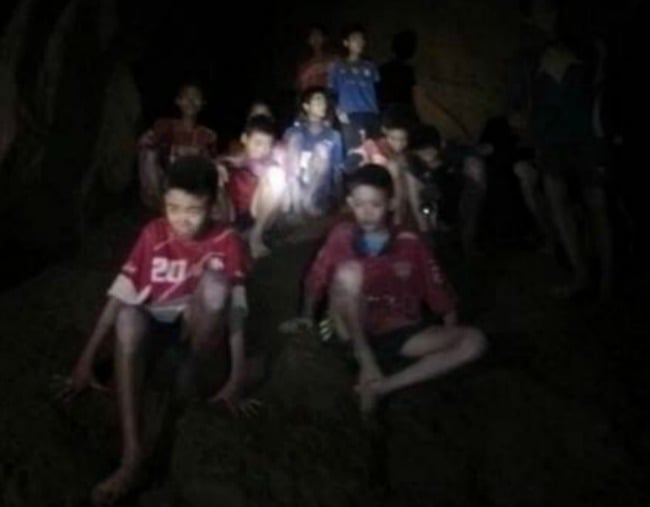
As the sun set on Saturday, June 23, a number of parents whose sons played for the local Moo Pa (Wild Boars) soccer team in Chiang Rai, Thailand, started to worry.
By 7pm, their teenage boys, aged between 11 and 16, hadn’t returned from a practice soccer game, which was to be followed by an excursion at Khun Nam Nang Non Forest Park. When they called the head coach of the team, Nopparat Khanthavong, he immediately made some phone calls, and learned that the 25-year-old assistant coach, Ekapol Chanthawong, and the rest of the team, had been exploring in the Tham Luang caves.
Nopparat quickly made his way there, to discover bikes and bags at the entrance to the cave, and water seeping out.
Speaking to The Washington Post, the 37-year-old said, “I screamed — ‘Ek! Ek! Ek!’ My body went completely cold.”
It’s believed the team and their coach ventured into the cave for an ‘initiation ceremony’ which involved writing their names on the cave walls. After the group entered, however, it started to rain, sending floodwater into the mouth of the cave. The monsoon flooding blocked the group’s exit route, so they kept walking until they found a space that was slightly elevated and dry. This is where they remain stuck.





























































































